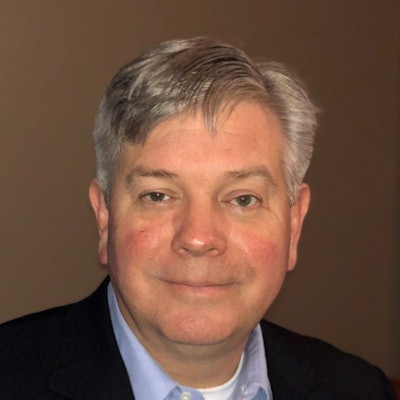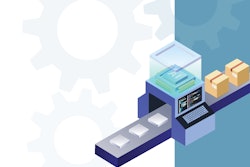Key takeaways:
- Once someone becomes an equipment engineer, they typically never change, and very few know the packaging materials intimately. But knowing both sides allows for better package optimization.
- What’s important is having detailed understanding of the environment(s) that the package will be used in and a comprehensive understanding of all the different items the package needs to solve for in its life cycle.
- The future products in our industry’s pipelines continue to get more complex while regulatory expectations continue to drive new ways of working with the packaging design, process, and equipment.
In this new regular feature, Healthcare Packaging is interviewing some of the best and the brightest in the industry to learn more about their careers, their thoughts on what has changed over the years within the industry, and what challenges are arising.
Ron Yakubison is the Executive Director, Packaging Solutions and Strategy Implementation, part of Packaging Tech Ops at MSD. He started as a summer intern at the company in 1991, returning to officially start his career in 1992, and he hasn’t left yet. Since then, he has held 16 positions during his 32-year career at MSD, ranging in various roles in packaging engineering, package design, and operations. Yakubison’s passion is packaging, and it shines through his successful career at MSD while also being a part time lecturer with Rutgers School of Engineering. Read on for how he got into the industry, how to best optimize a package, and his insights into what makes packaging in biopharmaceuticals so unique.
Q: How did you get into packaging?
I discovered packaging during my third year at Michigan State University. Initially, I was in material science and engineering. I have always been mechanically inclined, and my family had a tool & die business, so my plan was to eventually work there. But I switched to packaging due to its diverse applications and opportunities. And I eventually ended up in pharmaceutical packaging. The interesting thing about pharmaceutical, specifically, is that you’re always reinventing something, always working on something new, that’s part of the excitement.
One of my key values is that I wanted to work at an American company, it’s a core value of growing up in the Detroit area, and at the time, MSD had maintained Fortune’s Most Admired company since 1987.
Q: What unique challenges does pharmaceutical packaging face today?
Ensuring patient safety and compliance is paramount. As products become more complex, packaging must meet stringent requirements to maintain product integrity and efficacy, especially for home-administered treatments.
Q: I understand you have a background in both packaging materials and machinery… Is this atypical for someone in your position?
It is atypical. Most professionals specialize in one area. However, having knowledge in both fields provides a comprehensive understanding of the entire packaging process, from design to implementation.
If you think about packaging, it’s packaging components, machinery, and the process of how it all gets together. Many people go into package design/development and focus in on the design. The equipment engineer is more of a mechanical engineer— they need to know a little bit about the design/ components but focus more on the equipment. At a lot of companies, that’s two different groups.
I have always had an interest in both. In my career, I was responsible for package design, but I became more and more interested in the equipment. At the beginning of my career, my projects gave me significant opportunity to travel to sites and suppliers, accelerating my development of packaging processes and problem solving. A foreign assignment in the Netherlands also enhanced my shop floor understanding and capabilities, while understanding how to work in a different culture.
Q: Sometimes there is a disconnect between the material side of things and the machinery. Would you agree?
Yes. Once someone becomes an equipment engineer, they typically never change, and very few know the packaging materials intimately. But knowing both sides allows for better package optimization. Same goes for package development professionals; it is difficult to optimize the design without knowing about the equipment and the packaging process.
Q: How has your background in both packaging materials and machinery influenced your career?
Understanding both components and machinery has been crucial. By developing my packaging knowledge broadly across all aspects of packaging, it has allowed me to have a more comprehensive view that has been pivotal in driving packaging strategy at MSD. This dual expertise has allowed me to optimize packaging designs effectively. What are we mostly optimizing the packaging for? For us, its ensuring patient safety with compliance packaging. Asking a patient to dose themselves with a sterile product (say a syringe) presents challenges. Then there are the human factors of getting all that to work. And then understanding the population as far as literacy (instructions for use).
I have had mentors and sponsors throughout my whole career and being at a large company allowed me to continue to grow. My love for packaging continued to grow, too. I made the decision early on that staying in packaging was more important than advancing my career. I have been lucky that I have been able to accomplish both during my time at MSD.
Q: What has changed the most in the industry over the last 32 years?
In general, the industry has moved from high-volume solid dosage products to more niche, sterile products. The rigor of science and the understanding of root causes in packaging has significantly improved from years past. At MSD, we’re known for digging into the science of almost anything. The level of understanding, the science of packaging today vs. ten years ago is night and day. The maturity of what goes into a good package vs. an OK package vs. a great package—that bar continues to rise across all industries, and I believe biopharmaceutical packaging in some ways is driving that.
Q: What do you see as the biggest challenge or biggest opportunity in the pharmaceutical industry? How does packaging help alleviate this challenge?
What’s important is having detailed understanding of the environment(s) that the package will be used in and a comprehensive understanding of all the different items the package needs to solve for in its life cycle. A good packaging professional needs to take all these items into consideration and find the correct balance based on business and product needs.
The future products in our industry’s pipelines continue to get more complex while regulatory expectations continue to drive new ways of working with the packaging design, process, and equipment. As we continue to expand the markets where these products serve, it is important to manage the added complexities these markets have to the package and distribution, by leveraging standards and focus on more sustainable transportation methods.
The goal of pharmaceutical packaging is to make sure the patient receives safe, quality, compliant product, and will prepare and use the product per the instructions provided. This includes ensuring the package provides all the needed protections, which could include moisture, light, temperature, oxygen, shock, vibration, and compression protection while the product travels through the supply chain.






















